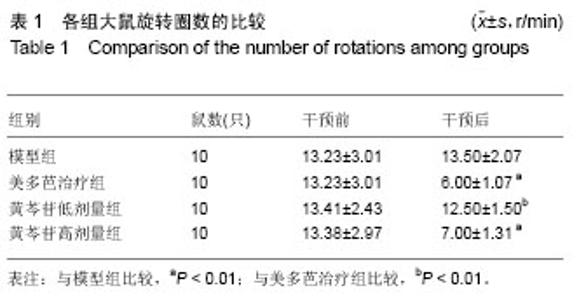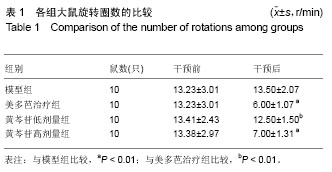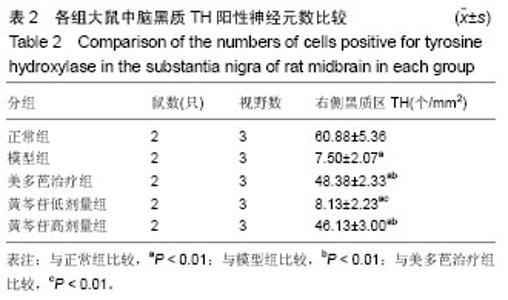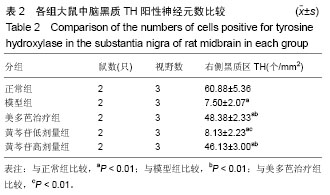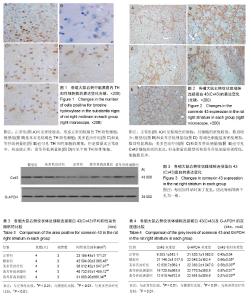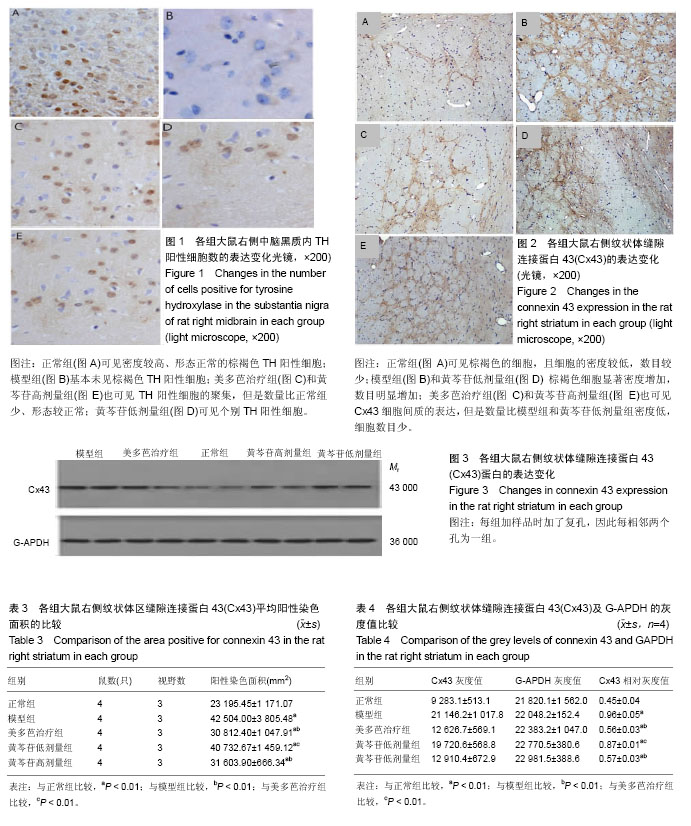| [1] 王晓丹,纪勇.帕金森病200年话史[J].中国现代神经疾病杂志, 2017, 17(1):5-8.[2] Beitz JM. Parkinson's disease: a review. Front Biosci (Schol Ed). 2014;6:65-74.[3] 陈生弟,王刚,刘军,等.帕金森病发病机制与诊治的基础与临床研究进展.上海交通大学学报(医学版),2012,32(9):1221-1226. [4] Liu Y, Gao J, Peng M, et al. A Review on Central Nervous System Effects of Gastrodin. Front Pharmacol. 2018;9:24.[5] Wei W, Chen HY, Fan W, et al. Chinese medicine for idiopathic Parkinson's disease: A meta analysis of randomized controlled trials. Chin J Integr Med. 2017;23(1):55-61.[6] Liu CT, Wu BY, Hung YC, et al. Decreased risk of dementia in migraine patients with traditional Chinese medicine use: a population-based cohort study. Oncotarget 2017;8(45):79680-79692. [7] Xu M, Chen X, Gu Y, et al. Baicalin can scavenge peroxynitrite and ameliorate endogenous peroxynitrite-mediated neurotoxicity in cerebral ischemia-reperfusion injury. J Ethnopharmacol. 2013;150(1): 116-124. [8] Hwang JM, Tseng TH, Tsal YY, et al. Protective effects of baicalein on tert-butyl hydroperoxide-induced hepatic toxicity in rat hepatocytes. J Biomed Sci. 2005;12(2):389-397.[9] Zhong X, Liu H. Baicalin attenuates diet induced nonalcoholic steatohepatitis by inhibiting inflammation and oxidative stress via suppressing JNK signaling pathways. Biomed Pharmacother. 2018;98: 111-117.[10] 吴纪凯,王玲,张轶.黄芩苷对帕金森病小鼠模型的影响[J].长春中医药大学学报,2015,31(3):454-456. [11] Liu X, Liu C.Baicalin ameliorates chronic unpredictable mild stress-induced depressive behavior: Involving the inhibition of NLRP3 inflammasome activation in rat prefrontal cortex.Int Immunopharmacol. 2017;48:30-34.[12] 张前,杨浩,陈博,等.黄芩苷防治中枢神经系统疾病的研究进展[J].中国药师,2017,20(2):327-331. [13] 辛文妤,何国荣,等.黄芩素和黄芩苷的药理作用及机制研究进展[J].中国新药杂志,2013,22(6):647-659.[14] Lindvall O, Rehncrona S, Gustavii B, et al. Fetal dopamine rich mesence Phalic grafts in Parkinson’s disease. Lancet. 1988; 2(8626-8627):1483-1484.[15] 孙玉芝,赵贝贝,雒晓东.6-OHDA 诱导帕金森病大鼠模型行为学及脑内神经递质的动态变化[J]. 新中医,2016,48(9):225-230.[16] 冯涛,马凌燕.帕金森病研究进展[J].科技导报,2017,35(4):45-48.[17] Pearl PL, Drillings IM, Conry JA. Herbs in epilepsy: evidence for efficacy, toxicity, and interactions.Semin Pediatr Neurol. 2011;18(3): 203-208.[18] Lex KM, Kundt FS, Lorenzl S. Using tube feeding and levodopa- carbidopa intestinal gel application in advanced Parkinson's disease. Br J Nurs. 2018;27(5):259-262.[19] Navarro A, Boweris A, Bandez MJ,et al. Humanbrain cortex:mitochondrial oxidative damage and adaptive response in Parkinson disease and in demetia with Lewybodies. Free Radic Biolite Med. 2009;46(12):1574-1580.[20] Beitz JM. Parkinson's disease: a review. Front Biosci (Schol Ed). 2014;6:65-74.[21] Avshalumova L, Fabrikant J, Koriakos A.Overview of skin diseases linked to connexin gene mutations. Int J Dermatol. 2014;53(2): 192-205.[22] Farber NM, Perez-Lloret S, Gamzu ER. Design and development of a novel supportive care product for the treatment of sialorrhea in Parkinson's disease.Curr Top Med Chem. 2015;15(10):939-954.[23] Kawasaki A, Hayashi T, Nakachi K, et al.Modulation of connexin 43 in rotenone-induced model of Parkinson's disease.Neuroscience. 2009; 160(1):61-68.[24] Wang Y, Wu Z, Liu X. et al. Gastrodin ameliorates Parkinson's disease by downregulating connexin 43.Mol Med Rep. 2013;8(2):585-590.[25] 马骏,马彪,王述菊,等.电针对帕金森病大鼠纹状体缝隙连接蛋白43的表达及谷氨酸含量的影响[J].针刺研究,2015,40(5):364-367.[26] 于昕,何国荣,杜冠华.黄芩素对帕金森病的神经保护作用[J].中国中药杂志,2012,37(4):421-425.[27] 任仲坤,杨智勇,李园园,等.黄芩苷锌对改善缺血性视神经损伤中氧化应激反应及激活血源性因子修复血神经屏障的作用和机制[J].中国实验方剂学杂志,2017,23(21),124-129.[28] 李爱英,王辉明,章政,等.黄芩苷对MPTP致帕金森病模型小鼠行为能力影响[J].青岛大学医学院学报,2016,52(1): 46-52.[29] 蔡勇.美多巴联合盐酸普拉克索治疗帕金森病对运动功能改善的疗效分析[J].中外医学研究,2014,12(24):113-115.[30] 王海雷,陈先文,高冕,等.左旋多巴诱发异动症大鼠纹状体缝隙链接蛋白Cx36表达的增强[J].神经解剖学杂志, 2013,29(1):56-60.[31] Navarro A, Boweris MJ, et al. Humanbrain cortex:mitochondrial oxidative dmage and adaptive response in Parkinson disease and in demetia with Lewybodies. Free Radic Biolit Med.2009;46(12): 1574-1580,[32] 谢静红.帕金森病的中医药治疗近况[J].光明中医, 2017,32(14): 2137-2139.[33] 时凯旋,刘晓莉,闫开龙,等.跑台运动通过增强星形胶质细胞Glu的摄取转运功能改善PD模型大鼠运动功能[J].北京师范大学学报:自然科学版, 2017,53(1):120-126. |
